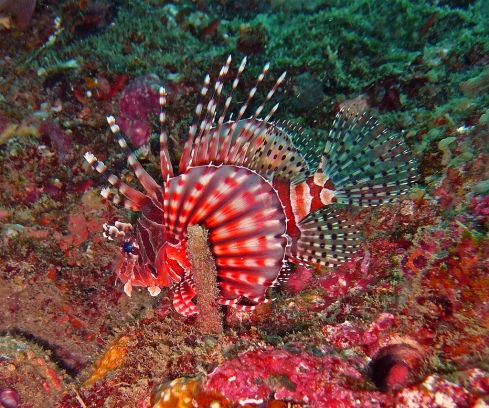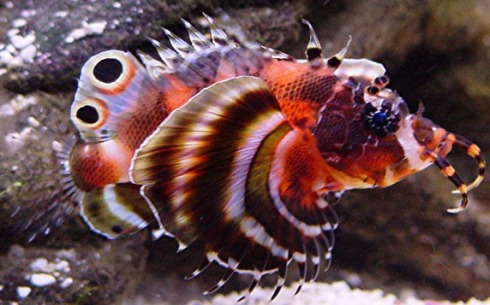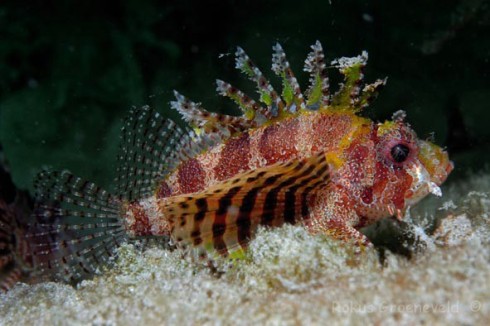At present, I am in no danger of coming into ownership of a yacht, but if I had one I kow what I would name it–the “Turkeyfish” a magnificent combination of my favorite bird and a lovely fish. But “turkeyfish” is not just a funny portmanteau or an impossible chimera, there are actual turkeyfish swimming the world’s waters.
Dendrochirus is a genus of small scorpionfish which live in the Indo-Pacific region: these dwarf lionfish are also known colloquially as turkeyfish. They are members of the Pteroinae subfamily of the Scorpionfish family (a family which includes some of the world’s most poisonous fish) and, like their relatives they have fans of sharp spines coated with venomous mucus. Because these spines are striped and shaped like the feathers of turkeys, divers fancifully call them turkeyfish (a common name which is sometimes even extended to larger lionfish of the Pterois genus).
Turkeyfish are formidable carnivores (for their size) with large powerful mouths and the ability to lurk in shadows and stalk prey around a reef. They mostly prey on small fish, arthropods, and mollusks but occasionally they eat big fish—or each other. The poisonous spines of turkeyfish cause large predatory fish to avoid them and their toxin is also venomous to animals other than fish (like humans which can be badly hurt, or even occasionally killed by the spines). The exquisite colors of these spines serve as a warning to predators, but have also caused the fishes to be popular in the aquarium trade.
Some species of lionfish have even been spreading around the tropical waters of the globe after irresponsible aquarists freed them into the ocean. It is unclear whether the turkeyfish have joined their larger cousins in invading non-native reefs but it is clear they are formidable fish.





Leave a comment
Comments feed for this article